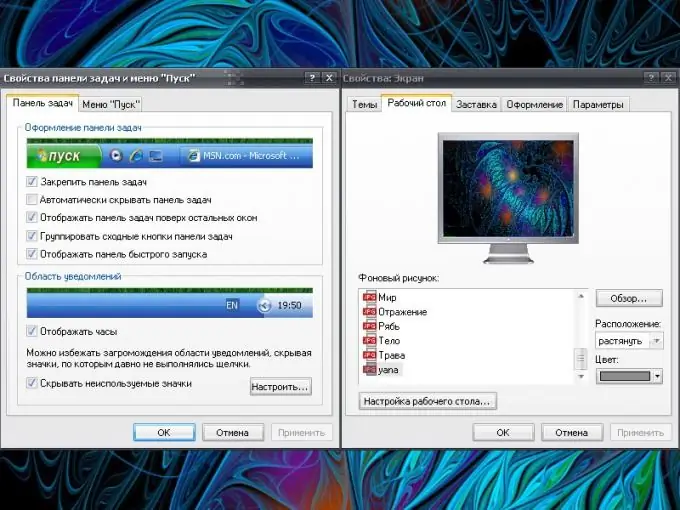The first thing the user sees when the operating system boots up is the "Desktop". It contains various elements with which the user accesses the resources of his computer. If your desktop settings are out of order, you can return it to its previous appearance in a few steps.

Instructions
Step 1
Call the "Display" component. To do this, open the Control Panel through the Start menu. In the Appearance and Themes category, select the Display icon. A new "Display Properties" dialog box will open. You can call this component in another way: right-click in any free area of the desktop and select the "Properties" item in the drop-down menu.
Step 2
If the background image is missing from your desktop, go to the Desktop tab. In the "Wallpaper" group, select the old image from the list provided. If the background you need is not in the list, click on the "Browse" button and specify the path to the image that you want to see on your desktop. Apply the new settings.
Step 3
If the “My Computer”, “My Documents” and “Network Neighborhood” folders are no longer displayed on the desktop, click the “Desktop Settings” button on the “Desktop” tab. An additional dialog box will open. Go to the "General" tab in it, set the marker in the fields opposite the elements you need and apply the new settings.
Step 4
If the size of items on the desktop has changed (icons and fonts are larger or smaller), click the Options tab. In the "Screen Resolution" group, use the "slider" to set the resolution that will be convenient for your perception. Click on the "Apply" button and confirm the changes.
Step 5
To change the color scheme for windows that open on your computer and the font size in folder names, click the Appearance tab. Use the dropdown boxes in the appropriate groups. To select visual effects, click on the "Effects" button. For more detailed customization of various elements, click on the "Advanced" button. After making changes, click on the "Apply" button.
Step 6
If the taskbar is no longer displayed on the desktop, then it is hidden. Move your cursor to the bottom edge of the screen and wait for the panel to "pop up". Click on it with the right mouse button and select "Properties" from the drop-down menu. In the "Taskbar and Start Menu Properties" window that opens, go to the "Taskbar" tab and uncheck the "Automatically hide the taskbar" box in the "Taskbar Appearance" group. Apply new settings, close the window.






